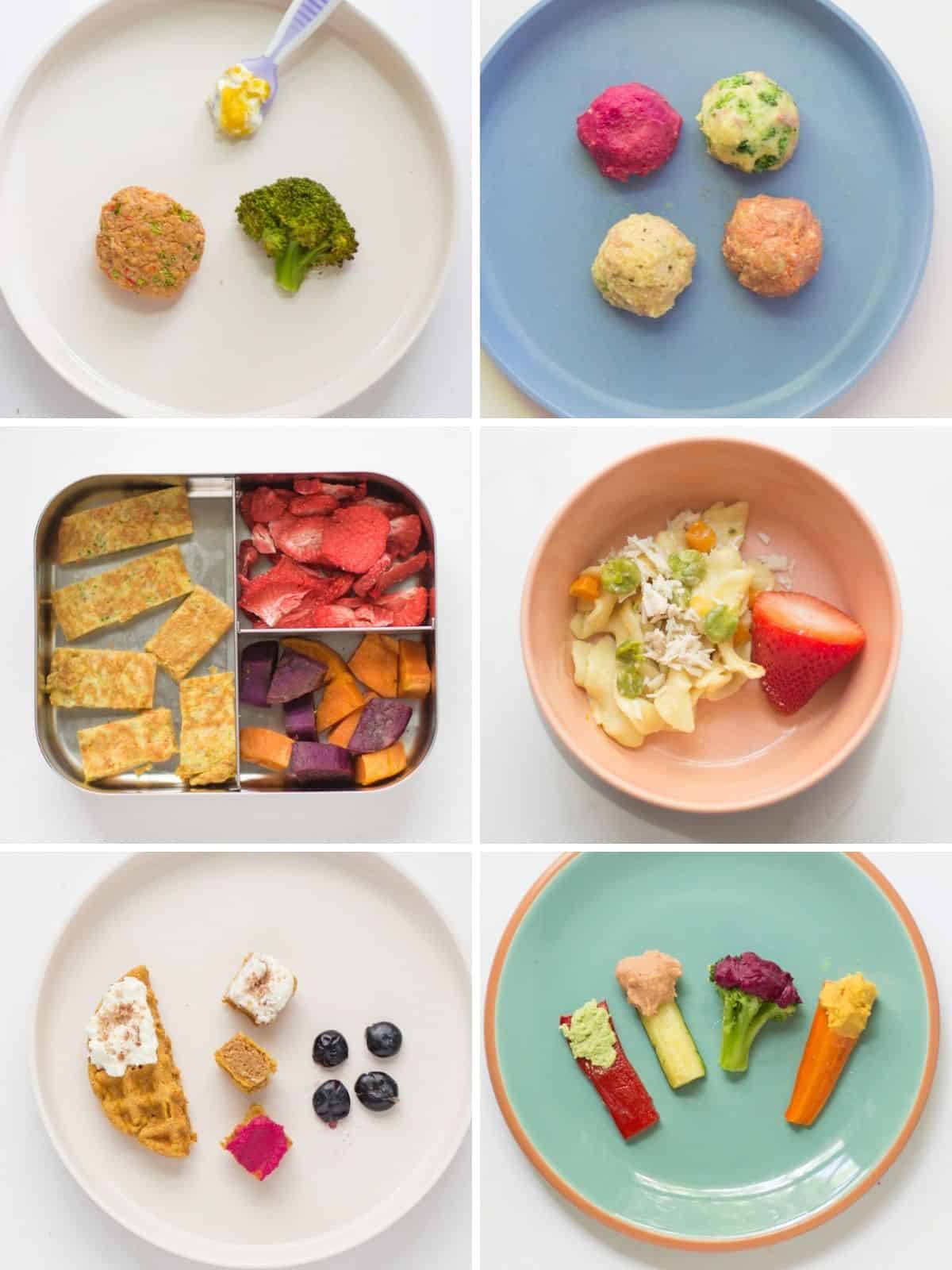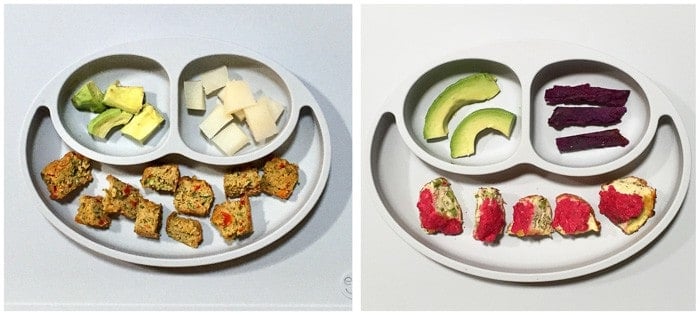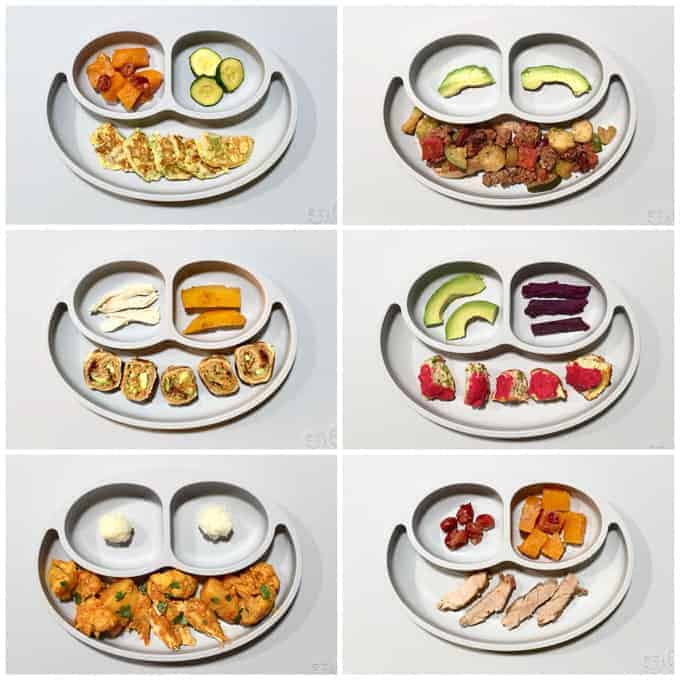- momnbennytots letter
- Posts
- Best Baby Finger Foods
Best Baby Finger Foods
Best Baby Finger Foods
Introducing finger foods to your baby can be exciting and overwhelming! Here is everything you need to know about serving them to babies 6 months and older so that they are safe and delicious!

Finger Foods for Baby
If you’ve decided to start solid foods by taking the baby-led weaning approach, you will be introducing big, soft-cooked finger foods from the start.
If you are taking the traditional weaning approach of starting with purees, you will most likely start offering finger foods around 8-9 months of age when you and your baby feel ready to move forward with texture.
Regardless of which method you choose, the goal is to offer finger foods by 9 months at the latest.
That’s because familiarity is a BIG part of taste and acceptance, and the earlier the exposure to all the different flavors and textures, the greater their acceptance.
If your baby stays on pureed textures for too long, it may be much more difficult to get them to accept different textures later.
If you’re feeling anxious about offering textured foods from the start and want to take the traditional weaning route where babies are spoon-fed purees or the combination approach (you do you!), here’s how to safely move forward from purees to textured foods.
Can Babies Eat Finger Foods without Teeth?
While you might think babies can’t eat foods that aren’t pureed until they have teeth, the reality is they don’t need teeth to enjoy table/finger foods.
Did you know that we chew with our molars, not the front teeth? And if you wait until the molars come in (normally around 12-18 months) to move on to table foods, you would miss that critical “window of opportunity” for developing food preferences.
Not to mention, failure to move from purees to textured foods by 9 months may lead to an increased risk for feeding difficulties later in life.
So how are they able to handle table foods without the molars? With their strong gums! And it is our responsibility as parents to make sure that the foods are appropriately cooked and served, and that’s what I want to share with you!
Do keep in mind, I’m sharing general timelines & guidelines here. What’s most important is to follow your baby’s lead as every child is so different and they develop at their own pace.
Choking vs. Gagging
Research shows that there’s no greater risk of choking with baby-led weaning in comparison to the traditional feeding practices.
What’s most important is to avoid these top choking hazards.

for 6-12 months
Choking is different from gagging, which is very common and to be expected. Gagging is a safety mechanism to prevent choking and contrary to how it appears, it doesn’t bother the babies.
Sit on your hands, remain calm, and let them work through it. Do NOT try to fish out the food from their mouth. Here are some additional tips on how to get through the first month of baby led weaning.
Best Iron-rich Finger Foods
Be sure to click on the links for more details on each of the specific foods.

Iron is arguably THE most important nutrient for babies and it is one of the primary reasons that we start solids when we do. Be sure to incorporate one of these foods at every meal to help meet their high needs.
Beans
Chicken
Eggs
Lentils
Salmon
Shrimp
Tofu
Soft Finger Foods for Baby – Vegetables

Asparagus
Beets
Bell peppers
Broccoli
Butternut Squash
Cabbage
Carrots
Cauliflower
Sweet potato – these sweet potato rounds are so fun!
Zucchini
As you see in the image above, do not be afraid to season your baby’s food from the start!
Baby Finger Foods – Fruits
Avocado – sliced into wedges or bite-sized pieces
Apples – serve similar to pears
Ripe banana – try soaking in peanut butter. Be sure to thin it out as globs of peanut butter or any nut butter is a choking hazard
Blueberries
Grapes – hold off until 9 months and be sure to serve quartered.
Kiwi – Halves, quarters, bite-sized
Mangoes
Melons – large thin rectangles
Pears
Peaches
Strawberries
How to Serve

In this section, you will learn how to cut and cook the finger foods so they are the appropriate shape and texture according to age.
Finger Foods for 6-8 Month-Old Baby

Food shape
Cut so that the food is about the size of 1-2 adult fingers pressed together widthwise and the length of an adult pinky finger (or longer).
Contrary to what you might think, serving big pieces of food will minimize choking risk and make it easier for your baby to grab with their fist (referred to as the palmar grasp). Initially, everything will likely get demolished, but with practice, your baby will learn to have better control of hand force.
Texture
Foods should be firm enough to grasp but soft enough to easily smoosh between two fingers or mash with the tongue on the roof of the mouth.
Roll slippery foods in ground nuts, seeds, flour, etc to make it easier for your baby to pick up. Crinkle cutters can also be very helpful.
Finger Foods for 9-11 Month-Old Baby

By this age, babies are learning to move food side to side within their mouths as well as forward and backward. They are also starting to learn the concept of biting (hopefully anyway).
Shape
Your baby is mastering their pincer grasp and is able to pick up small pieces of food between the thumb and index finger. Therefore, you can begin to cut food into small bite-sized pieces.
But do continue offering larger pieces of food so they can learn to take bites.
Texture
You can start serving slightly firmer foods by shortening the cooking time for veggies, roasting more often rather than just steaming, etc. Depending on the number of teeth your baby has, your chewing ability, and your comfort level, you can start offering finely grated raw fruits and veggies.
If your baby constantly turns into a competitive food eater (like mine did), here are some things you can do to help slow them down:
Help set pace by placing small amounts of food in front of her at a time either directly on the table/tray or a plate. I personally just took the plate away every time his mouth was full and encouraged him to finish chewing before offering his plate again. It was tedious but worked well for us.
Offer utensils (here are our favorites). Using it requires fine motor skills which will help slow down the pace.
Finger Foods for 12+ Months

Shape
Again, try to encourage your child to learn to take bites by not cutting up the food as much. As always, role modeling can do wonders in helping them to learn this new skill.
If your child is continuing to shove food, learn how to teach them to take bites.
Texture
You’ve done the hard work! At this point, your child should be able to handle almost all textures and eat like the rest of the family. Can you start offering crunchy vegetables? Yes! Here’s a guide on how to introduce raw vegetables to your little one in a safe and fun way.
Real-Life Baby Food Ideas

at 7.5- months

at 10-11 months
All the images you see in this article are actual meals I served to my babies.